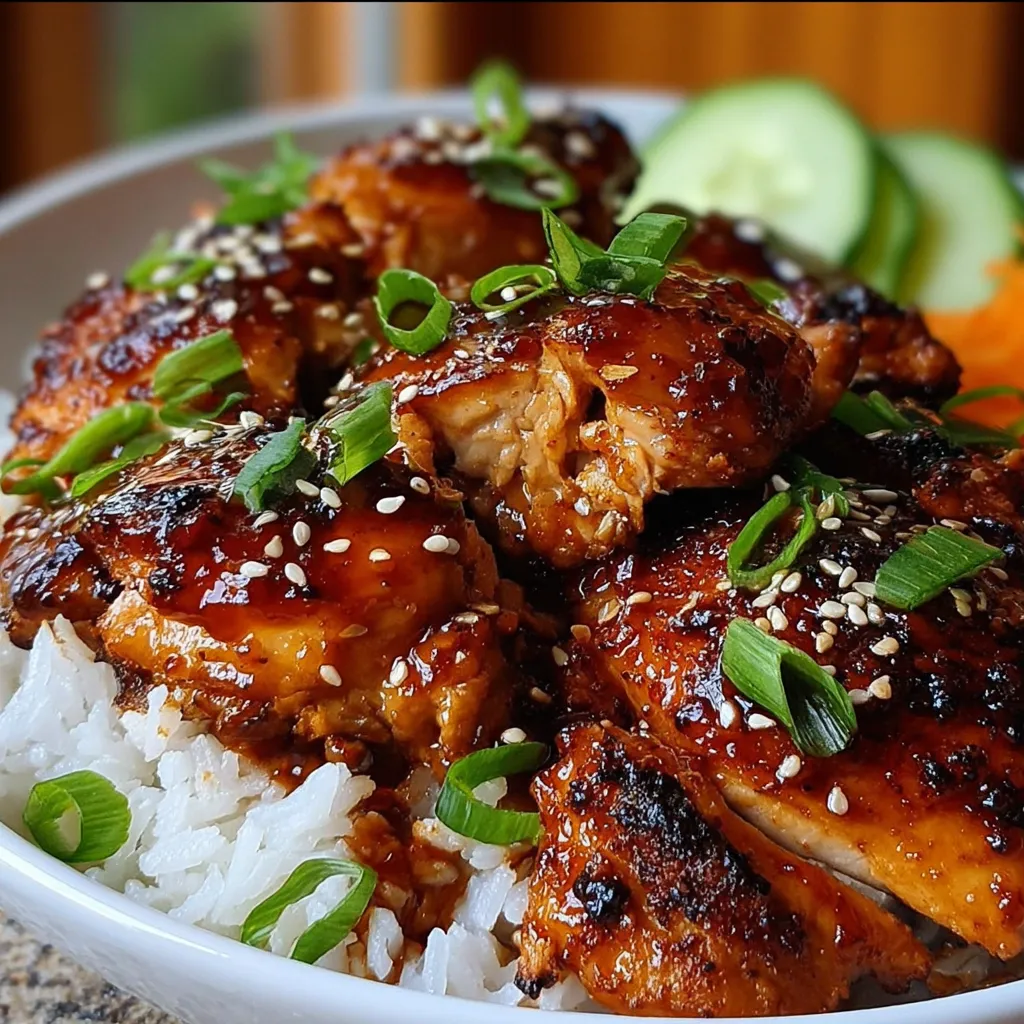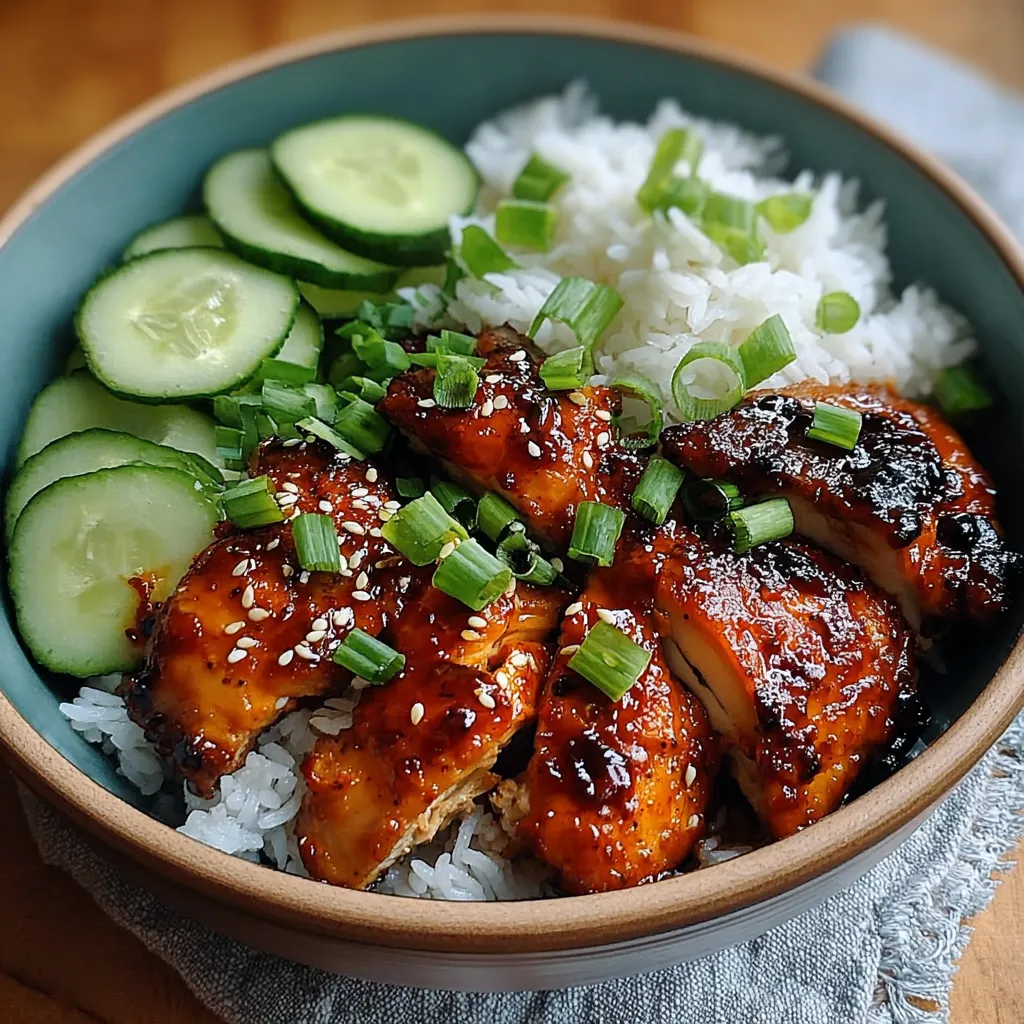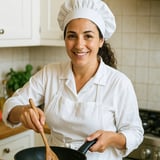 Save
Save
This sticky honey gochujang chicken transforms ordinary poultry into a sweet-spicy delight that delivers authentic Korean flavors right to your kitchen. The combination of sticky honey and fiery gochujang creates that irresistible sweet-spicy glaze that clings beautifully to every piece of chicken.
I first made this recipe when craving takeout but wanting something healthier. Now it's in our regular rotation, with my family fighting over who gets the last piece every single time.
Ingredients
- Chicken thighs or drumsticks: skin on provides extra crispiness and flavor but skinless works great for a lighter option
- Gochujang: this Korean chili paste is the star ingredient providing complex sweet heat that can't be replicated
- Honey: creates that sticky glaze texture while balancing the spice with natural sweetness
- Soy sauce: adds depth and umami foundation to the sauce
- Rice vinegar: brightens all flavors with necessary acidity
- Sesame oil: just a teaspoon transforms the sauce with rich nutty undertones
- Fresh garlic and ginger: aromatic flavor boosters that make the sauce taste truly homemade
- Cornstarch: optional thickener that helps create that restaurant quality glaze
Step-by-Step Instructions
- Prep the Chicken:
- Season generously with salt and pepper after thoroughly patting dry. This crucial step ensures crispy skin and proper seasoning. Take your time here as proper seasoning makes all the difference between good and great chicken.
- Create the Glaze:
- Whisk all sauce ingredients together until smooth. The sauce should have a glossy appearance with a vibrant red color. Make sure the gochujang is fully incorporated as it can sometimes clump at the bottom of the bowl.
- Cook Chicken Base:
- Whether using air fryer or oven, cook the chicken until just done with crispy golden exterior. Look for an internal temperature of 165°F but avoid overcooking which can dry out even thigh meat. The chicken should have a beautiful golden color before glazing.
- Develop the Glaze:
- Simmer sauce ingredients until visibly thickened, watching carefully as honey can burn quickly. The glaze should coat the back of a spoon and leave a clear path when you run your finger through it. This consistency ensures it will cling beautifully to your chicken.
- Final Glazing:
- Thoroughly coat chicken pieces in the warm glaze, turning multiple times to ensure complete coverage. The hot glaze will continue to caramelize slightly on the warm chicken, creating that perfect sticky exterior.
The gochujang is truly the heart of this recipe. I remember the first time I discovered this ingredient at a local Asian market. The store owner noticed my hesitation and recommended this exact preparation. Now I keep multiple tubs in my pantry at all times because it adds such incredible depth to so many dishes.
Perfect Pairings
This sticky chicken pairs beautifully with steamed white rice which soaks up the extra sauce perfectly. For a complete meal, add a simple cucumber salad dressed with rice vinegar and a touch of sugar to balance the spicy chicken. The cool, crisp vegetables provide the perfect contrast to the rich, sticky chicken.
Storage and Reheating
Store leftover chicken in an airtight container in the refrigerator for up to 3 days. The flavor actually improves overnight as the chicken continues to absorb the glaze. When reheating, add a tablespoon of water to the container and heat gently in the microwave or oven until just warmed through. The added moisture prevents the sauce from becoming too thick or the chicken from drying out.
Heat Level Adjustments
The beauty of this recipe lies in its adaptability. For a milder version appropriate for children or those sensitive to spice, reduce the gochujang to 1 tablespoon and increase the honey slightly. For heat lovers, add a teaspoon of Korean chili flakes (gochugaru) or a drizzle of chili oil just before serving. The base recipe provides a medium heat that most find perfectly balanced.
Cultural Notes
Gochujang has been a staple in Korean cooking for centuries, traditionally fermented in earthenware pots called onggi. While authentic Korean preparation might use different techniques, this recipe captures the essence of Korean flavor principles with the perfect balance of sweet, spicy, and savory elements that make Korean cuisine so beloved worldwide.

Recipe FAQs
- → Can I adjust the spice level of this dish?
Yes, you can easily adjust the spice level by changing the amount of gochujang. For a milder version, start with just 1 tablespoon. If you enjoy more heat, you can increase to 3 tablespoons. Remember that honey helps balance the spice, so you might want to adjust that accordingly too.
- → What cuts of chicken work best for this dish?
Chicken thighs are ideal for this dish because they stay juicy and tender during cooking while absorbing the flavorful glaze. However, drumsticks and wings also work excellently. Chicken breast can be used but watch cooking time carefully to prevent it from drying out.
- → Where can I find gochujang if I don't have an Asian grocery store nearby?
Many regular supermarkets now carry gochujang in their international foods section. You can also easily find it online through retailers like Amazon. If you can't find gochujang, though not identical, you could substitute with a mixture of miso paste and sriracha or chili paste with a touch of honey.
- → Can I make this dish ahead of time?
Yes! You can prepare the glaze up to 3 days ahead and store it in the refrigerator. The chicken can be cooked a day in advance, then reheated and glazed just before serving. For best results, store the chicken and glaze separately until ready to serve.
- → What side dishes pair well with Sticky Honey Gochujang Chicken?
This chicken pairs beautifully with steamed rice to soak up the delicious sauce. Other excellent pairings include kimchi, cucumber salad, stir-fried vegetables, or Korean-style pickled vegetables. For a complete meal, consider adding a light soup like miso or a simple green salad with sesame dressing.
- → Can I grill this chicken instead of using an air fryer or oven?
Absolutely! This chicken is excellent when grilled. Cook the chicken until nearly done (internal temperature around 155°F), then brush with the glaze during the last few minutes of cooking, adding more layers as needed until you reach 165°F. This creates a delicious caramelized exterior.
